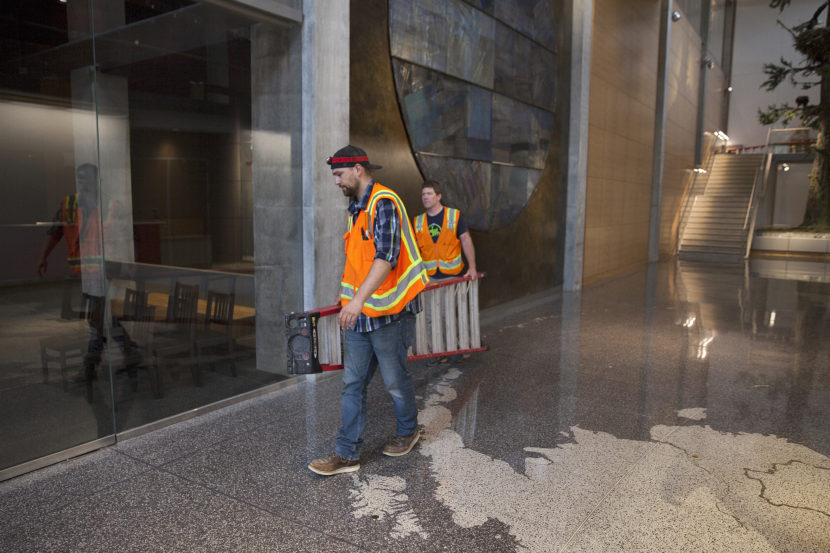
The hourly wage rate in Alaska has historically stayed higher than those of other states, drawing in workers from Outside to work in the state’s lucrative industries like oil and fishing.
And while Alaska’s rate is still comparatively high, other states are catching up. Today, Alaska’s 2021 average wage of $30.52 an hour is less than 10% higher than the national average of $28.01. Alaska’s wage rate ranks eighth overall nationwide, wedged between Maryland and Colorado.
State economist Neal Fried wrote about that phenomenon in the latest issue of Trends for the Alaska Department of Labor and Workforce Development. He says there are a few reasons why Alaska’s kept up a high hourly wage rate for so long.
Neal Fried: For a period of time, part of it was just to attract workers to this strange place that was in the old days, in the ’50s and ’60s and ’70s, pretty remote and difficult to get to. One way you could lure workers here is by paying higher wages. So that was probably one of the reasons why more generous wages were being offered.
The cost of living, of course, all along has been significantly above the national average and higher than most places, and back in those days probably was the highest in the country. That’s not quite the same.
Some of it was the kind of jobs, too. Working for the federal government in the construction trades was usually a pretty good gig. Working in the fishing industry, the same thing. And of course then working in the oil industry, where premium wages were often paid was another reason.
So there’s been a lot of different reasons. It’s sort of been part of our economic legacy and for some years and periods of time was a very major attractant to Alaska.
Sabine Poux: We don’t have the leg up that we once had in terms of that comparatively high hourly wage rate. How are you synthesizing this change and the shortening of the gap between Alaska and other states, and the national average?
Neal Fried: It’s been a longer-term trend and it didn’t just happen recently. It’s really since the mid-1990s and later that, first of all, our economy’s just grown more slowly than it did. And typically, when an economy is growing faster, wages often follow that trend.
And more recently, in the last decade, we have very much underperformed the rest of the country. Not only did we have a period of time of four or five years of a recession, but during much of that period, the rest of the country’s economy was literally red hot. There was wage growth there. So we’re a very different economic place.
And our mixture of jobs changed during part of this time — for example, the oil industry and construction and some of those higher wage sectors, they’re still here, but they as a percent of our total economy are smaller. And so that also sort of had a downward pressure on wages so that now, we aren’t that different.
And some people also believe it’s sort of the normalization of our economy. We have a more normal sort of mix of jobs. We have a very large service sector now that did not exist in those earlier decades and generally wages in that service sector tend to be lower.
Sabine Poux: Do you see that relative shift in hourly wage rates as a reason, maybe, that we aren’t seeing as much in-migration?
Neal Fried: I don’t think there’s any doubt that that is part of it, that we’re just not quite as attractive as we were. I mean, wages are often a very very strong attraction.
I think also, when things are good in a particular place, people don’t tend to move as much. Americans are moving less than they ever have. And the American economies in most of the country have done relatively well for quite a while, so people are staying closer put. So some of it’s also, just the fact that, you know, why move somewhere else when opportunities are pretty decent closer to home.
But yes, there’s no doubt that that is a factor.




